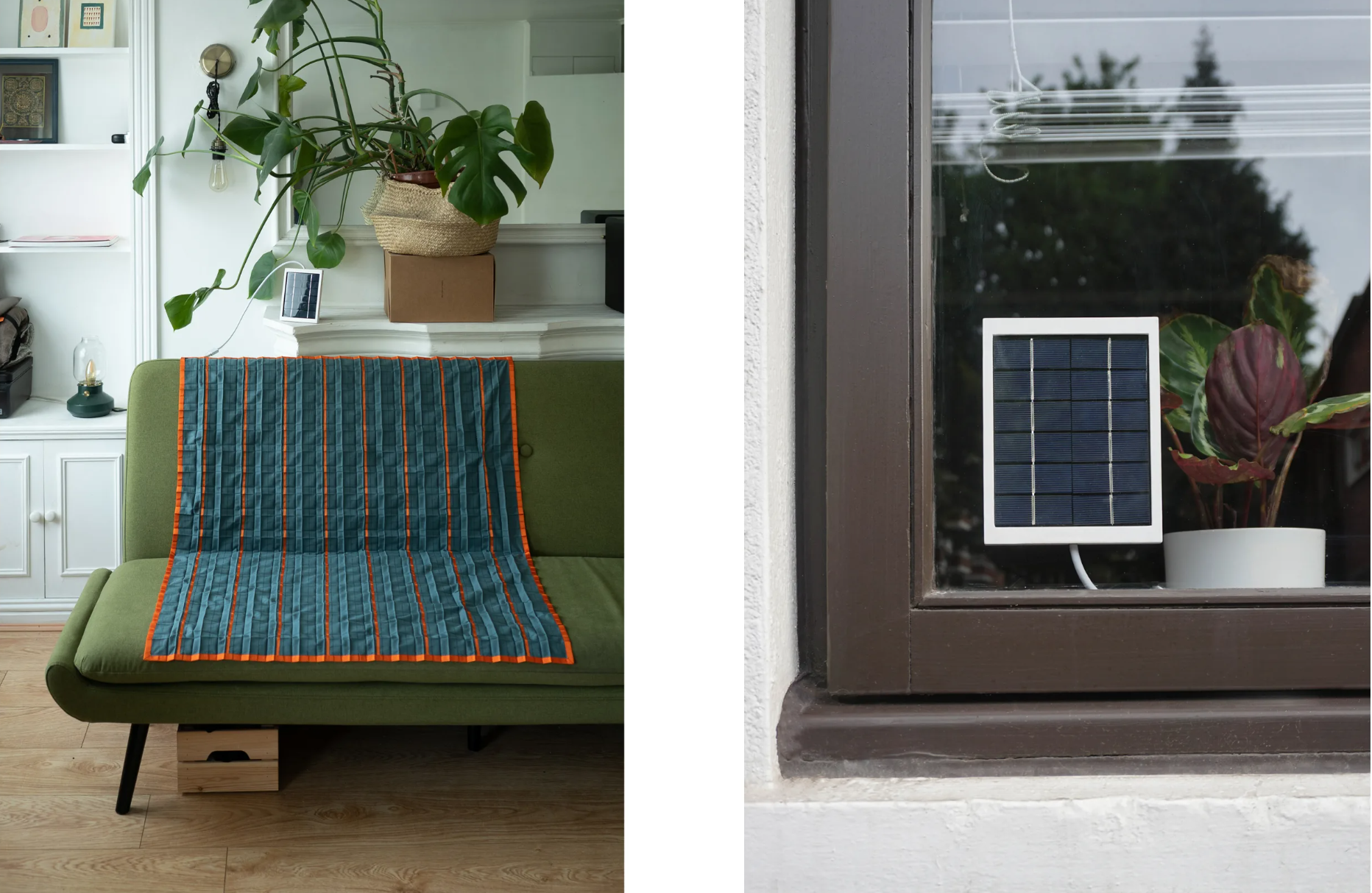Today, people are increasingly aware of the threat imposed by climate change and the relationship between energy consumption and the current climate emergency. Yet, the opportunity to make significant changes to energy consumption can be expensive and technologically complex, excluding those without the resources or know-how.

Image Credit: Steinhage, M., (2022) UAL Graduate Showcase. [online] Graduateshowcase.arts.ac.uk. Available at: https://graduateshowcase.arts.ac.uk/project/367951/cover
Access to sustainable living and greener choices is still fairly limited to those that can afford to do so, often raising questions around inclusivity and accessibility in relation to sustainable, self-sufficient living.
If the aim is to move towards a greener future, including the widespread adoption of sustainable energy choices at both the macro and micro scale, the opportunity for everyone to access the renewable energy solution is absolutely vital.
A recent graduate of the MA Material Futures at Central Saint Martin’s (CSM), London, Mirielle Steinhage has conceived of a solar-powered blanket that could grant access to renewable energy to those in need. The blanket is made from a conductive material that can be used to warm a person using solar power as the energy source.
People Power
Steinhage was inspired to develop the project – People Power – as a way of making sustainable energy more accessible and by exploring ways in which to introduce people to affordable renewable energy products.
This is because often, there is an imbalance in the emphasis placed on individuals to take personal responsibility versus being able to access the resources to do so. This is far from the ideal scenario in a world trying to combat climate change.
This is where Steinhage’s ‘People Power’ could prove to be crucial, as it offers those living close or beneath the breadline access to technology that would benefit them in a practical scenario.
Cost Savings and Circularity
The energy-saving ‘Solar Blanket’ directs heat toward the user and isolates the warmth in their immediate periphery, which avoids wasting energy on heating up an entire space. Furthermore, the blanket could retail for around 10 GBP (roughly 12 USD), and as it is solar-powered, it does not incur any extra costs for charging either via a power supply or buying replacement batteries.
The solar panel which charges the blanket remains functional in almost all weather conditions and has been designed for easy positioning in front of a window. Currently, Steinhage has three low voltage prototypes, between 5 and 12 volts. The 12-volt blanket has the capacity to heat to around 30 degrees Celsius, and the power bank remains functional for two hours on a single full charge.
The blanket’s portable power bank has the potential to be used with other compatible objects in the home. Additionally, portability means that the blanket can be used in a wide range of scenarios and environments as it is not restricted to a single room.
Steinhage’s design is made from polyester fabric combined with a conductive yarn that helps generate heat. A polyester ribbon is also part of the fabrication to prevent any damage when the yarn comes into contact with itself when folded or in use.
Steinhage specifically chose these materials for their cost-effectiveness, functionality, and durability. Moreover, they can be easily separated for recycling, making the blanket a circular product that could be later converted into other useful products.
In the future, Steinhage is focused on developing more sustainable, self-sufficient renewable energy products that are accessible to all. She hopes she can extend the People Power range to include household lighting solutions and fans that would be compatible with the same solar panel and power bank.